Natural Resources by Countries
The world’s largest producer of Soybeans is the United States followed by Brazil and Argentina while the largest producer of Water is Brazil which produces about 19% of the total water. When it comes to Uranium, Canada produces the most of it while other large producers are Australia, Kazakhstan, Russia and Niger. About 18% of the total Wheat produce comes from China followed by India, United States and Russia.
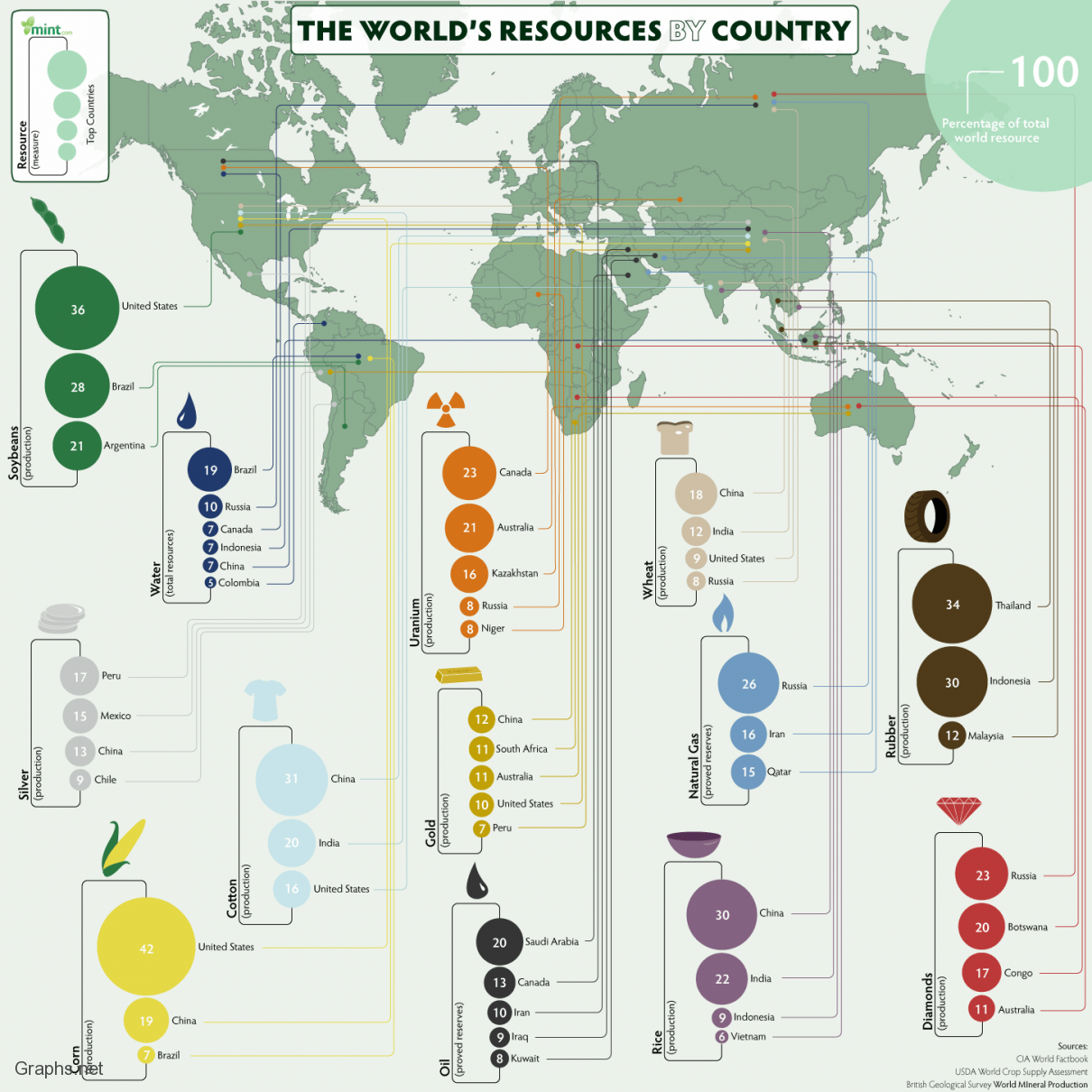
Rare Earth Elements (REE)

Source
There are 17 REEs in total while 15 of them fall within the chemical groups Lanthanides plus Yttrium and Scandium. These elements are used in the production of mobile phones and laptops mainly to reduce their size and weight. REEs are really useful for the growth and emergence of new and clean energy sources. The other uses include Defence equipments, satellite communications and medical applications.
Water management
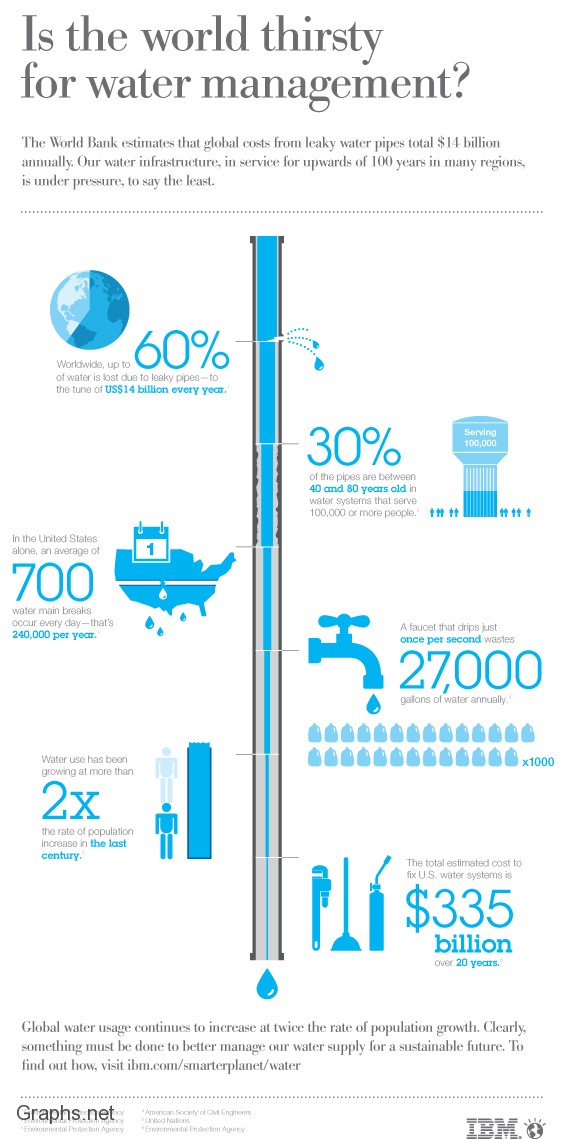
World Bank has estimated that the total global cost caused due to leaky water pipes is around $14 billion annually. This is about 60% of the total water lost. In the United States, about 240000 water mains break every year! Another fact that surprises is that the usage of water has been increasing at twice the rate of growth of population.
Lack of clean water
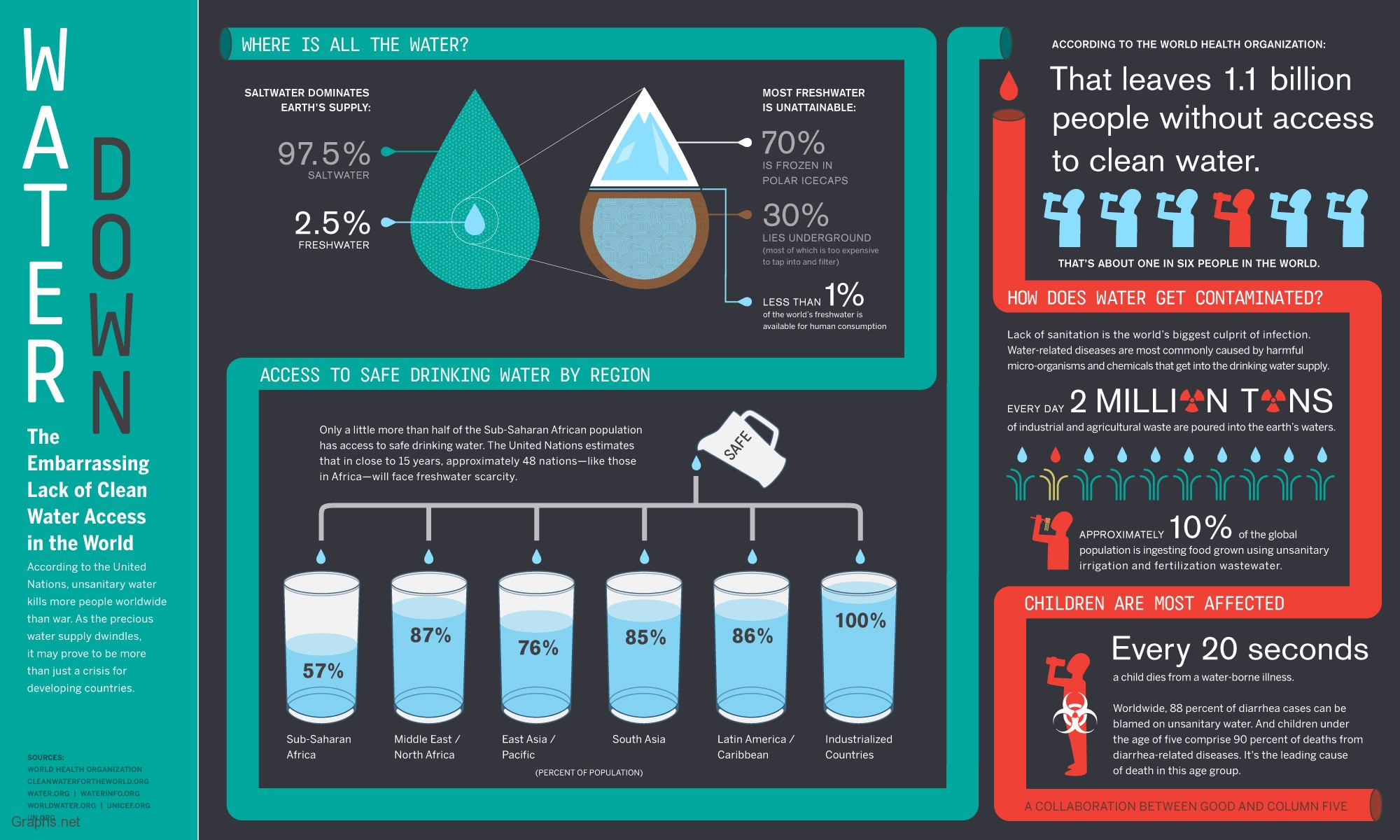
The percentage of freshwater is only 2.5 % out of which less than 1% is available for human consumption! The United Nations has estimated that in about 15 years, approximately 48 countries shall be faced with freshwater scarcity. Since lack of sanitation causes many infections and water borne diseases, it is not a surprise that every 20 seconds, a child dies due to water borne disease.
Evolution of Solar Technology

It all started when in 1839; Alexander Becquerel observed photovoltaic effect in a conductive solution that was exposed to light. From the year 1888 to 1891, Aleksandra Stoletov created the first ever solar cell. In 1973, a Skylab was powered by solar cells which was followed by installation of solar panels in White House in the year 1977. In 2010, President Barack Obama gave orders for the installation of solar panels in the White House.
Wind Power harvesting
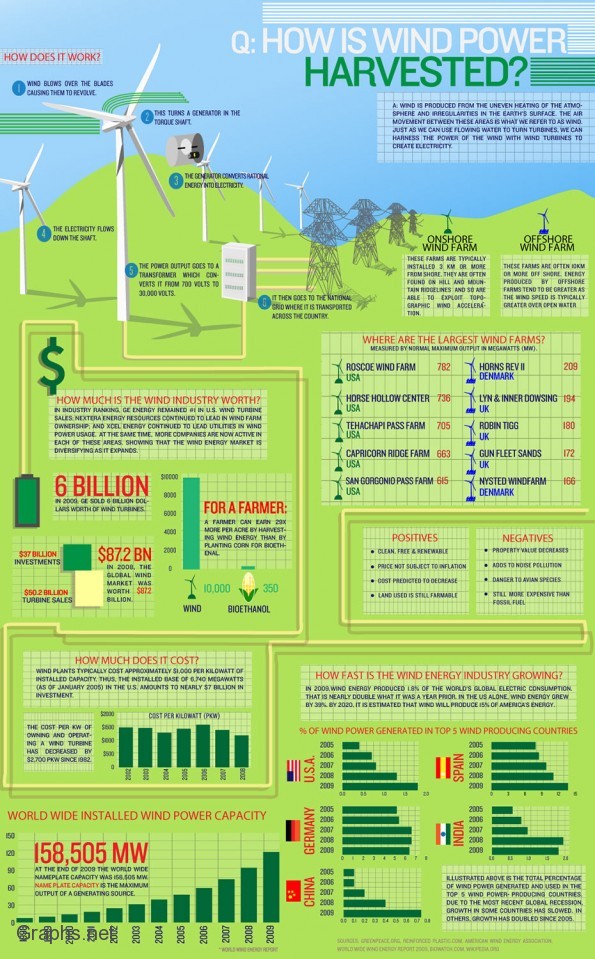
Wind is produced due to the uneven heating of the atmosphere as well as the irregularities found in the surface of the earth. When air moves in these uneven areas, the air is termed as wind. Wind power is harvested when wind is used to create energy on wind farms. The largest Wind farm in the world is Roscue Wind farm in the USA.
Natural Resource: Oil

In the year 1951, Oil was discovered in the subsurface of the Bakken formation which is a rock unit under the soil of North Dakota, Montana and Saskatchewan. But it was only in the year 2008 that the new rock fracturing technology revolutionalised the way oil is discovered. This resulted in the discovery of 18 billion barrels of oil.
Climate-Smart agriculture
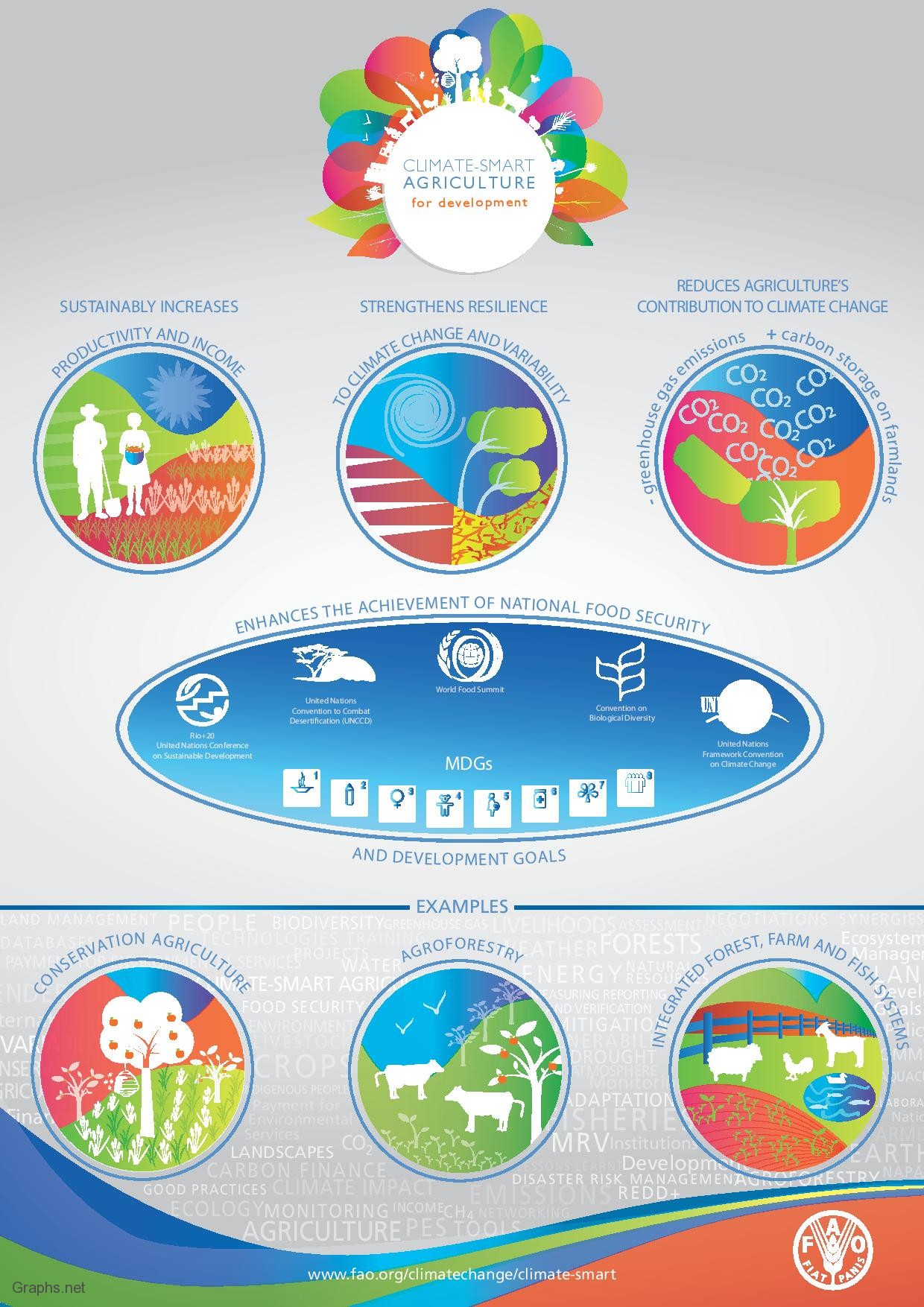
Conservation farming, agro forestry and integrated forest, farm and fish systems are some examples of climate-smart agriculture for development. Some of their uses include increase in productivity and income, reduction in agriculture’s contribution in climate change and strengthening of resilience to climate change and variability.
Gas and Hybrid

An average American citizen drives 15000 miles in one year which is equal to the distance from Los Angeles to Sydney and back. An American use around 140 billion gallons of gas per year. By driving the Hybrid vehicles, 788 dollars per year can be saved on gas. This would also save 74 billion gallons of gas per year.
Energy efficiency

Source
The most energy efficient country in the world is United Kingdom followed by Japan, Germany and China. The most used energy resource is oil which is followed by coal, natural gas and Hydroelectricity. In order to become more energy efficient, we need to invest more in energy efficient solutions like solar power and energy efficient appliances like boiler, dishwasher, washing machine and cooling systems.
Trade shows resulting in production of waste

Source
The Trade show industry only falls second after the construction industry as far as production of waste is concerned. 60000000 people visit a trade show each year and 20 lbs of waste is generated by each person which amounts to over 1 billion lbs of waste. Some methods to reduce waster are usage of recycled cardboard, eco-cups and cutlery, recycled pen and pad and tablets to replace booklets.